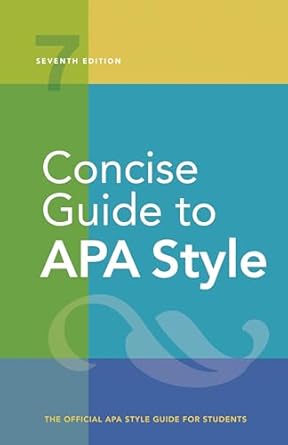[toc]
mastering the art of abstract writing
Concise Guide to APA Style: 7th Edition (OFFICIAL)
Page 37 Review
Understanding the Essence of an Abstract: A Deep Dive
In the realm of academic writing, the abstract serves as a pivotal gateway to the core content of a paper.
It’s a concise yet comprehensive summary that allows readers to quickly grasp the essence of the research or analysis presented.
As the provided text from “Paper Elements CY 13” elucidates, an abstract holds significant importance in conveying the paper’s central message.
Let’s delve deeper into understanding the key characteristics and formatting guidelines of an effective abstract.
The Core Attributes of a Powerful Abstract
The text highlights several crucial attributes that define a well-crafted abstract.
These include accuracy, non-evaluative nature, coherence, readability, and conciseness.
Let’s examine each of these in detail, drawing heavily from the provided text:
- Accuracy: “Ensure that the abstract correctly reflects the purpose and content of the paper.
Do not include information that does not appear in the text.” This underscores the importance of faithfully representing the paper’s content.
The abstract should be a true reflection of the work, avoiding any embellishments or additions.
- Nonevaluative: “Report rather than evaluate; do not add to or comment on what is in the text.” This emphasizes objectivity.
The abstract should present the findings and arguments without injecting personal opinions or judgments.
It’s about summarizing, not critiquing.
- Coherent and Readable: “Write in clear and deliberate language.
Use verbs rather than their noun equivalents and the active rather than the passive voice (e.g., ‘investigated’ instead of ‘an investigation of’; ‘we present results’ instead of ‘results are presented’; see Section 2.13).
Use the present tense to describe conclusions drawn or results with continuing applicability; use the past tense to describe specific variables manipulated or outcomes measured.” Clarity and ease of understanding are paramount.
The abstract should be written in a way that allows readers to quickly grasp the key information.
The text recommends using active voice and strong verbs for better clarity.
Proper tense usage is also crucial for conveying the appropriate context.
- Concise: “Be brief, and make each sentence maximally informative, especially the lead sentence.
Begin the abstract with the most important points.
Do not waste space by repeating the title.
Include only the four or five most important concepts, findings, or implications.” Brevity is key.
The abstract should be a condensed version of the paper, focusing only on the most essential elements.
The lead sentence should immediately capture the reader’s attention and convey the central theme.
Repetition and unnecessary details should be avoided.
Formatting Guidelines for Abstracts
Beyond the content, the format of the abstract is equally important.
The text provides specific guidelines regarding length, placement, and structure:
“Abstracts typically are limited to 250 words.
Place the abstract on its own page after the title page (i.e., page 2).
Write the section label ‘Abstract’ in bold title case (see Section 5.7), centered at the top of the page, and place the abstract below the label.” This specifies the standard length constraint and placement of the abstract within the paper.
The heading should be clearly formatted in bold title case.
“Abstracts are usually written as a single paragraph without indentation of the first line.
Some instructors may require a structured abstract, which is also written as a single paragraph without indentation and includes labels to identify various sections (e.g., Objective, Method, Results, Conclusions); unless instructed otherwise, write the labels in bold italic font.” The typical format is a single, non-indented paragraph.
However, structured abstracts with labeled sections may be required, depending on the instructor’s instructions.
The text suggests formatting these labels in bold italic font.
The Importance of the Text (Body)
The extract also briefly touches upon the main body of the paper:
“The text, or body of the paper, contains the writer’s main contribution.
The text can be organized in many ways, and the organization generally depends on the paper type (see Sections 1.2-1.4).
Most papers include an introduction, consisting of one or a few focused paragraphs.” This highlights the central role of the text in presenting the writer’s original work.
While the organization may vary depending on the type of paper, an introduction is generally considered a standard component.
Crafting a High-Quality Abstract: A Summary
In conclusion, a well-written abstract is a critical component of any academic paper.
It serves as a concise and accurate representation of the paper’s content, allowing readers to quickly assess its relevance and significance.
By adhering to the principles of accuracy, non-evaluation, coherence, readability, and conciseness, and by following the specified formatting guidelines, writers can create abstracts that effectively communicate the essence of their work.
As the excerpt emphasizes, the abstract should be a “brief, comprehensive summary of the contents of your paper,” and by focusing on the core elements, it can significantly enhance the impact and accessibility of your research.
Buy full ebook for only $18: https://www.lulu.com/shop/american-psychological-association/concise-guide-to-apa-style-7th-edition-official/ebook/product-rmzpq54.html?page=1&pageSize=4

